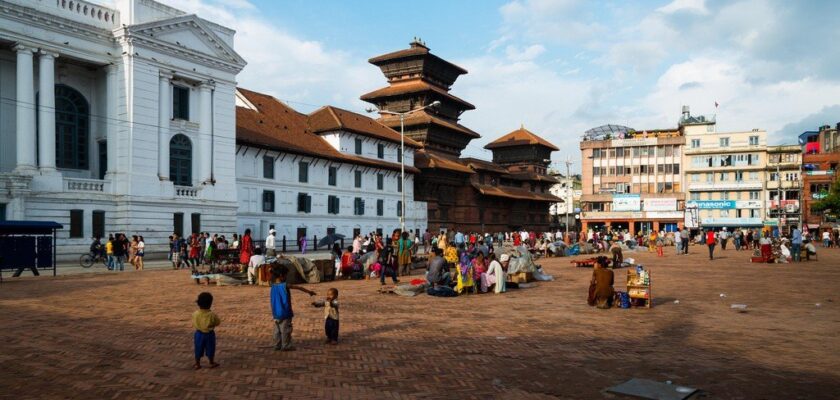Durbar Square in Bhaktapur
Durbar Square in Bhaktapur is larger than its counterpart in the capital, but is less crowded with temples and not at all crowded with residents and tourists from all three royal cities of the Kathmandu Valley. But it was not planned that way at all. In the old days it was crowded with temples and historic buildings, but the devastating earthquake of 1934 destroyed many of them, and today only bare plinths mark the spot where famous monuments once stood. Most of the buildings in Durbar Square were built between the 15th and 17th centuries, when it became the residence of the royal dynasty. Durbar Square has largely regained its former glory thanks to a large-scale restoration project funded by a German charitable foundation in the 1970s.
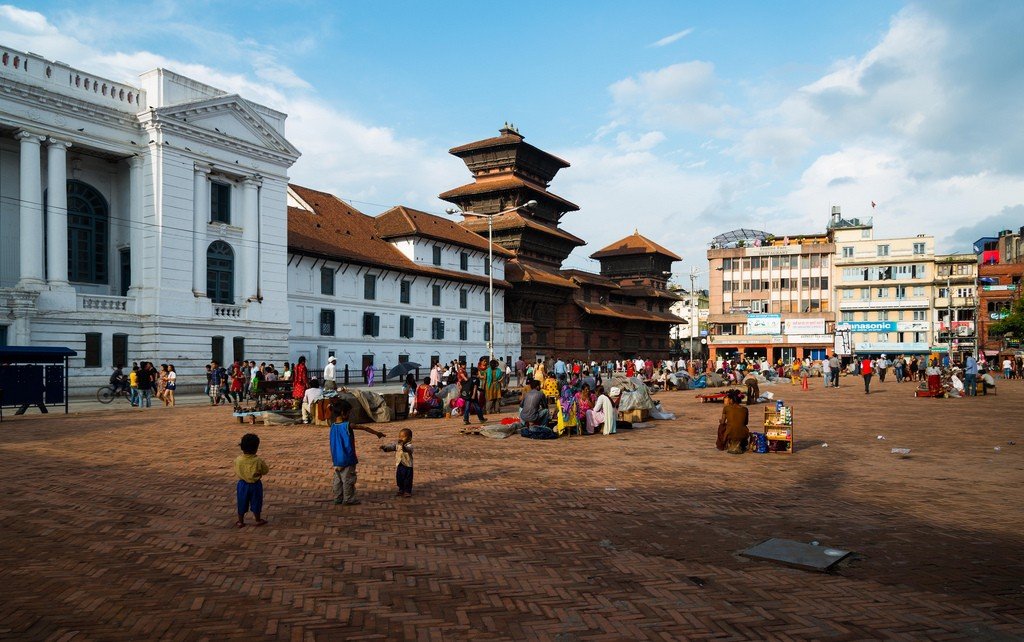
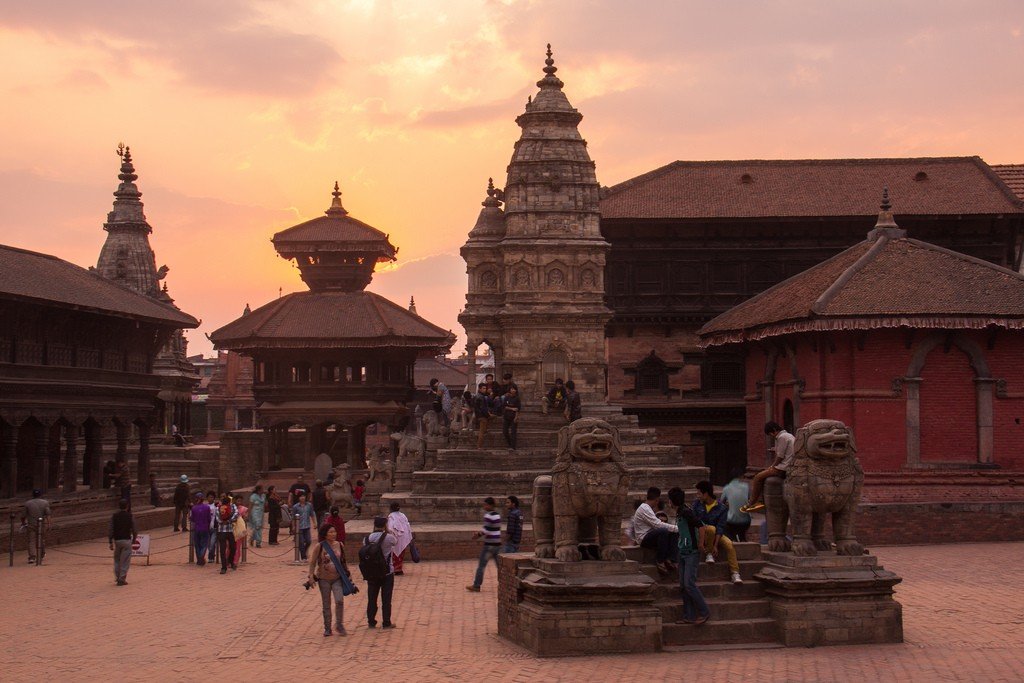
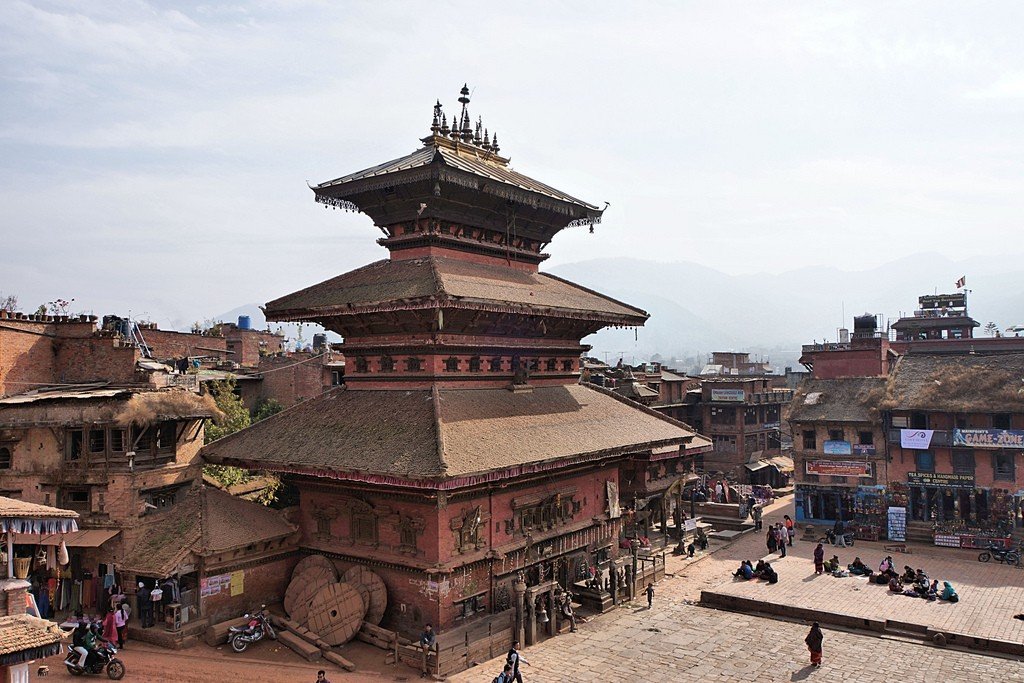
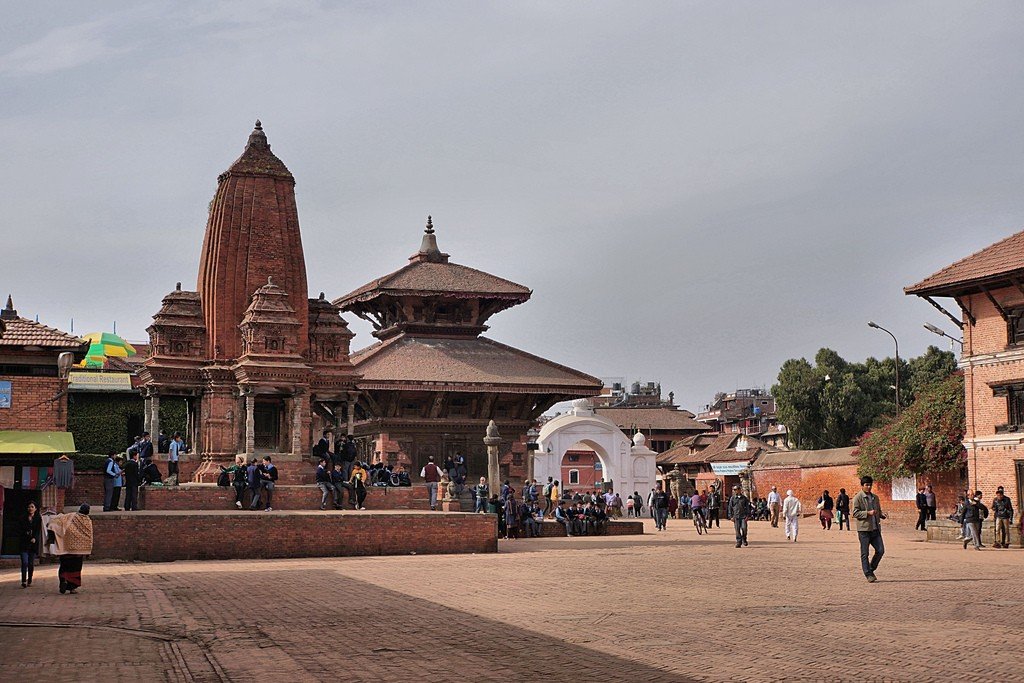
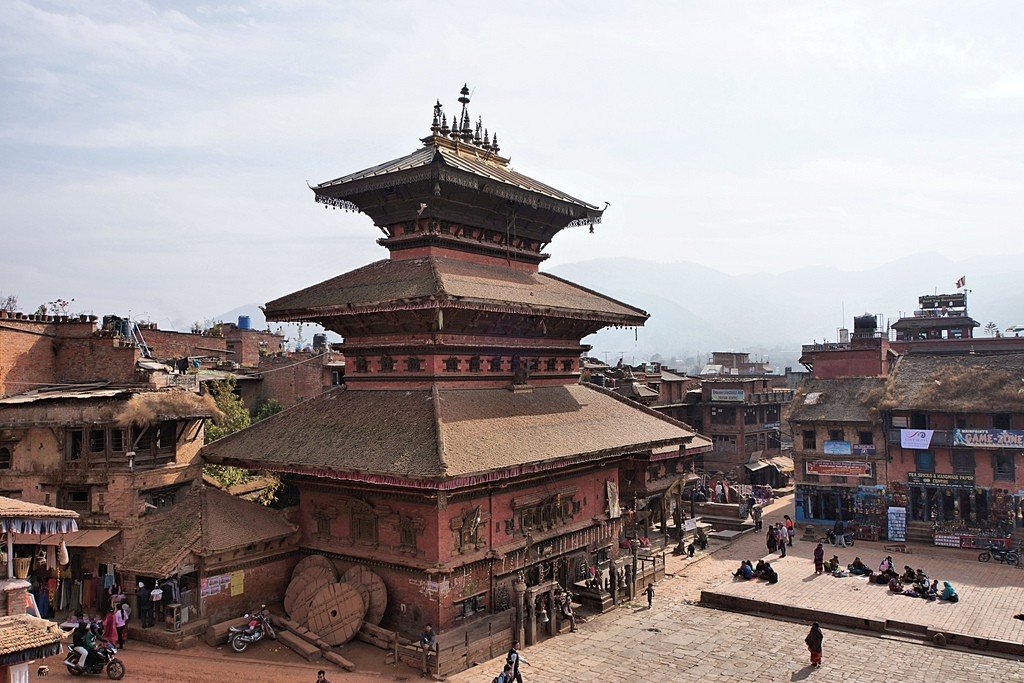
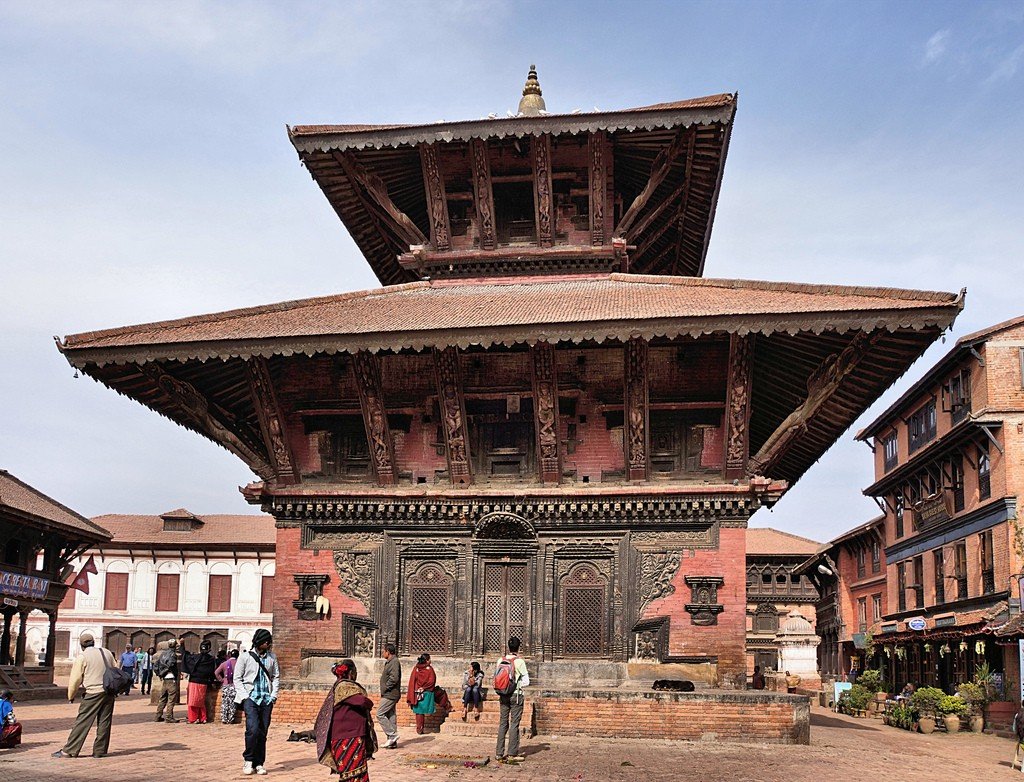
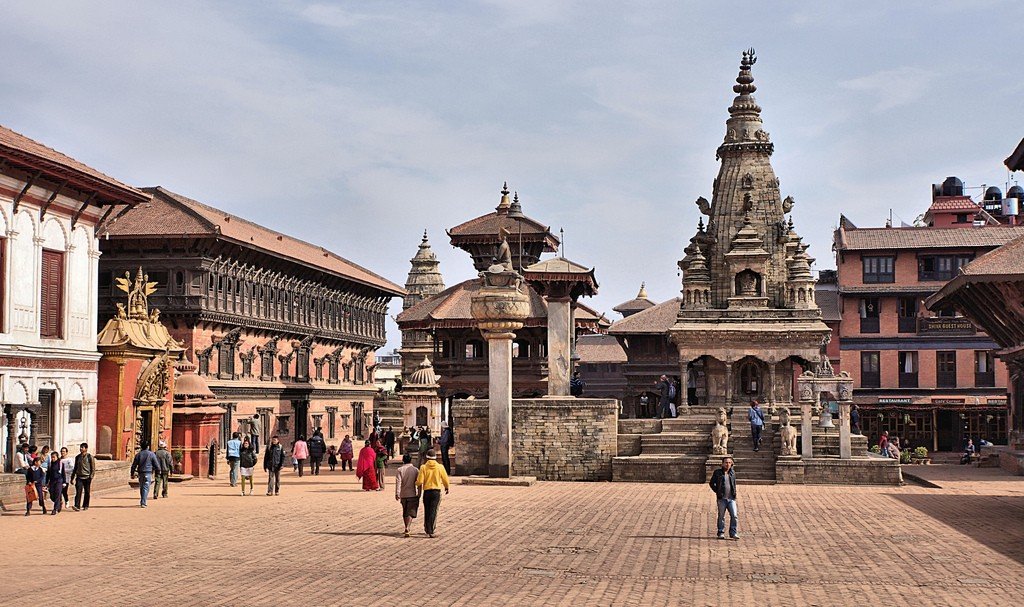
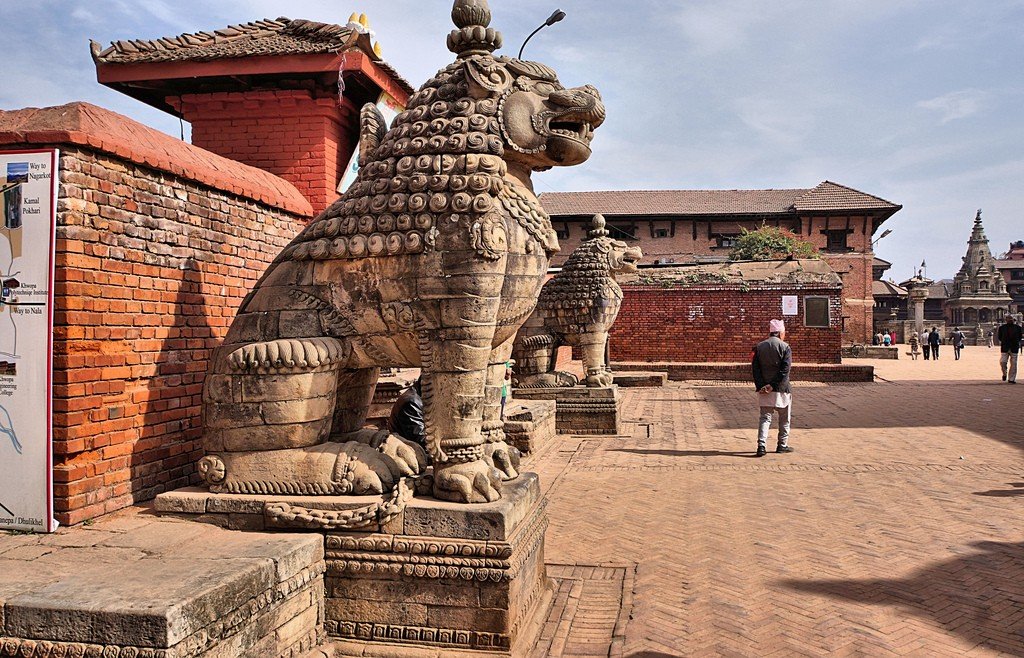
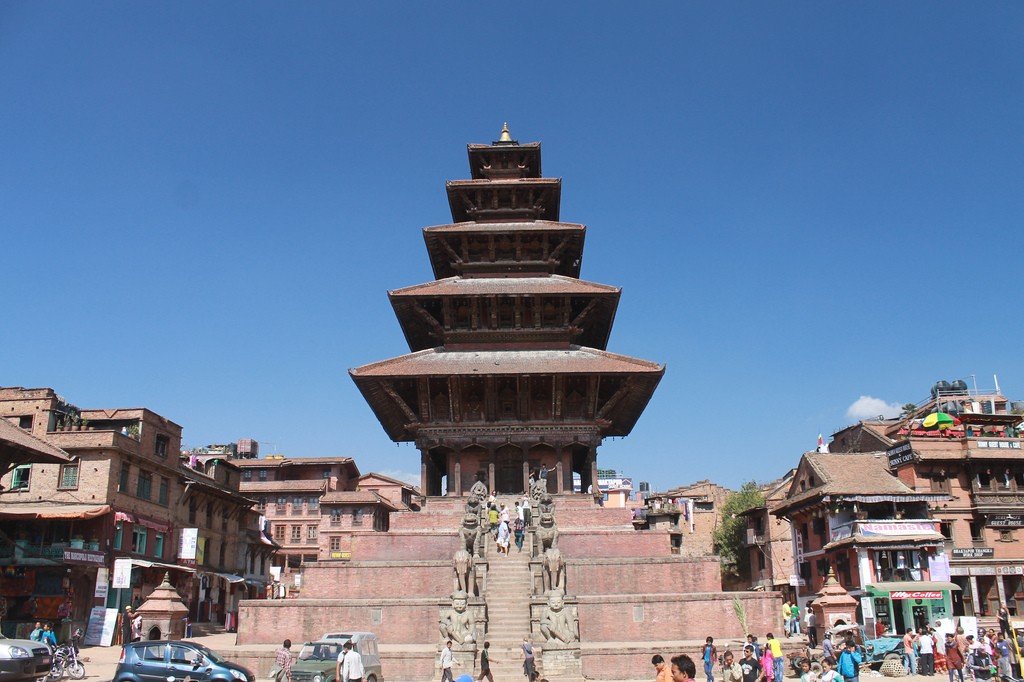
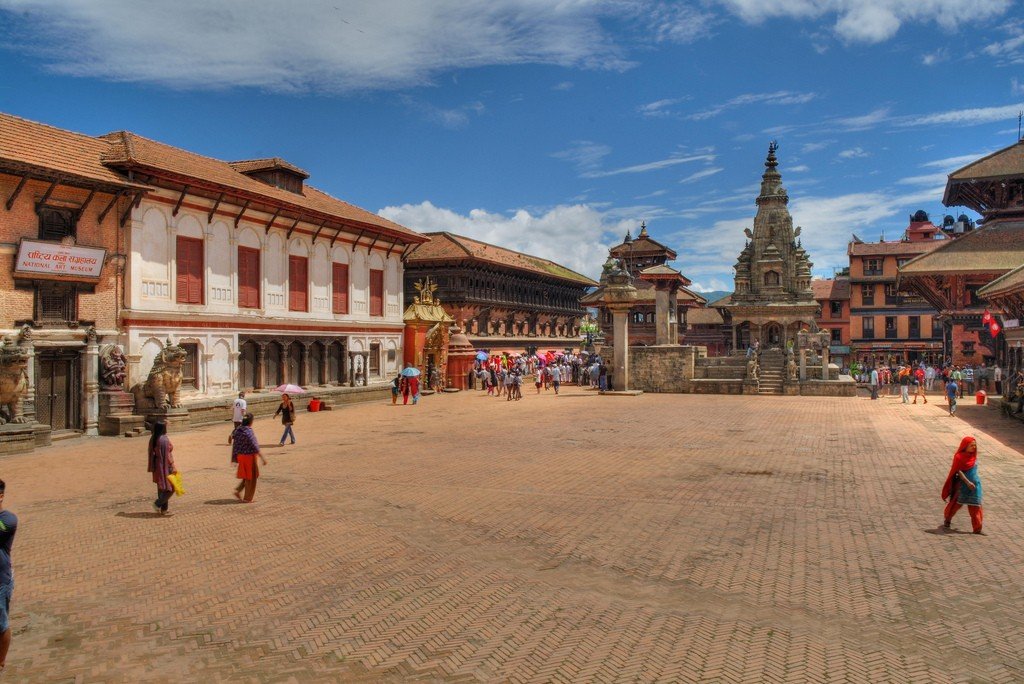
General information
The square was designated a UNESCO World Heritage Site in 1979. Surrounded by magnificent architecture, it clearly demonstrates the high craftsmanship of non-Wari artists and artisans over several centuries.
.
The preserved complex of Buddhist pagodas and Hindu temples is centered around the 55-window Palace. Wooden sculptures are found everywhere in this square – pillars, tympans, gateways, doorways and windows, all looking beautiful and organic. The following structures stand out the most:
Royal Palace
The Royal Palace, founded during the reign of King Yaksha Malla (1428-1482), was later rebuilt by subsequent kings, especially Bhupatindra Malla. As in the ancient palaces of Kathmandu and Patan, entry is allowed only to parts of the Royal Palace. Earlier, the palace was famous for ninety-nine magnificent courtyards, of which only half a dozen remain. The rest were destroyed by the 1934 earthquake.
.The western part of the palace, formerly known as Malati Chowk, has been converted into an art gallery. The entrance to the gallery is guarded by figures of Hanuman, the monkey god, and Narasingha (Narasimha, Nrisimha, Nep. Narasingha – incarnations of the god Vishnu in the image of a man-lion especially honored by followers of Vaishnavism). The gallery has a fine collection of Hindu and Buddhist art paintings, manuscripts (manuscripts) on palm leaves, thangkas, metal, stone and wooden items.
.Shiva Parvati Temple
A very small Shiva Parvati temple, famous for carvings depicting erotic scenes, stands 70 meters from the western entrance to Durbar Square.
.Statues of Ugrachandi and Bhairav
Next to the Sundari Chowk, statues of the formidable Bhairava (right) and Ugrachandi (the dreaded incarnation of Durga) can be seen on the wall of the building. The god and goddess are adorned with garlands of human heads.
.Char Dham
There are four temples located at the western end of Durbar Square. These are the tilted Rameshwar temple dedicated to Shiva and the Bhadri temple where Narayana (Vishnu) is worshipped. In front of them sits a large Krishna (Jagharnath) temple. In the distance from them stands the Shiva temple, built in the Shikhara style in1674 by King Jitamitra Malla. Together the four temples are called Char Dham, similar to the four Himalayan shrines.King Bhupatindra Malla’s Column. Of the Malla dynasty kings ruling Bhaktapur, King Bhupatindra Malla was the most prominent. He had a great influence on the development of art and architecture of the city. Opposite the Taleju Chowk is a column with a kneeling king sitting on its top, looking towards the magnificent gates of his palace. Installed in 1699, it is justly considered the most beautiful column among its kind (installed in Patan and Kathmandu).
.Watsala Durga Temple and Taleju Bell
Near the statue of King Bhupatindra Malla, just in front of the Royal Palace stands the richly decorated fine wooden carved stone Vatsala (Devi) Durga Temple, erected in 1672 by King Jagat Prakash Malla. This temple, built in the Shikhara style, bears some resemblance to the Krishna Mandir in Patan. In front of the temple is a large Taleju bell dedicated to Goddess Taleju, installed by King Jaya Ranjit Malloy in 1737
.Chyasilin Mandap
Next to the Vatsala Durga temple is an eye-catching water tank, further up rises the Chyasilin Mandap. This octagonal temple was one of the finest structures in the plaza until the 1934 earthquake.The temple was rebuilt in 1990 in the same appearance using its original components (fragments, parts).Golden Gate and the Palace of the Fifty-Five Windows.
.Golden Gate
The Golden Gate, called Sun Dhoka, is one of the finest displays of architecture in the entire valley. The ten-armed goddess Taleju is depicted in the center of the gilded torana (arch). The gateway leads to the Palace of Fifty-Five Windows, built in the 17th century by King Bhupatindra Malla. The upper floor balcony with 55 windows is a masterpiece of wood carving art.
.Naga Pokhari
In the northeastern part of the royal palace is the Naga Pokhari, a royal water tank built in the 17th century and used for the daily ritual bathing of the deity of Goddess Taleju. It is surrounded by stone nagas (snakes) around its perimeter, and a column with the head of a naga stands in the middle of the tank. Water enters the tank from a drainpipe shaped like a makara (a mythical sea monster) with a goat’s head peeking out of its mouth.
.Pashupatinath Temple
The Pashupatinath Temple, or Yaksheshwar Mahadev Temple, is dedicated to Shiva and is an exact replica of the Pashupatinath Temple in Kathmandu. According to legend, King Yaksha Malle, after whom the temple is named, Shiva appeared in a dream and ordered to build a replica of the Pashupatinath temple near his palace. Built by King Yaksha Malla in 1475 (according to other sources in 1482), the temple is by far the oldest in the area. An earthquake in 1934 partially destroyed the structure. The building was later rebuilt, giving it a second birth.
.Siddhi Lakshmi Temple
At the southeast corner of the Royal Palace is, dating back to the 17th century, the Siddhi Lakshmi Temple, also known as the Lohan Dega, or Stone Temple. On either side of the temple staircase are statues of a man and a woman pulling reluctant children by the hands and holding dogs at bay. They are followed by horses, rhinoceroses, kimpurushas (creatures of a semi-divine nature with the head of a human and the body of a lion) and camels.
.Fasidega Temple
In the center of the second part of Durbar Square is the large white Fasidega Temple, dedicated to Shiva. The temple rises on a six-tiered platform from where one can enjoy a delightful view of the entire valley.
Tadhuchen Bahal or Chatur Varna Mahavihara is a restored monastery dating back to 1491.This is where the cult of worship of Goddess Kumari originated. In the courtyard, unusual carvings depicting the torment of sinners can be seen on the eastern side of the roof supports.
.